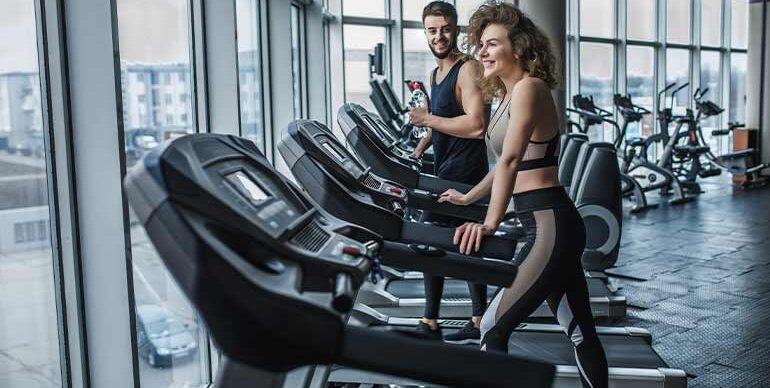
You want to knock of some extra pounds out of your belly, and you have tried all sorts of diets and exercises, but to no avail. Confused and exhausted, you really do not know how to dispose off the paunch. Moreover, your body can’t handle all that abuse. You also have to go to work next day. Also, you have a family to tend to. Under no circumstances can you be fatigued with such a gruelling schedule.
We recommend that you try out Warrior Cardio. It is an easy and effective way to melt off all that fat that you compiled over a period of time. For those who don’t know what it is, Warrior Cardio is an exercise regimen of simple punches, light weights, and total intensity can build a knockout physique in as few as 30 minutes per session. Wonderful and effective, isn’t it?
Before we dig deeper into it, us give you some more information about it. One, it is addictive. Two, if you are able to link various tidbits of the workout methodology, then you might be able to master a form of martial art. Now, that is a bonus in itself!
In order to squeeze the most out of a fitness training program, you need to have a clear cut understanding of how your metabolism is affected by the workout. Once you grasp the concepts behind it, then you will be able to handle the exploits better. Who knows, you might be able to create a new workout method which might burn off the extra calories with minimal effort?
HOW THE BODY USES ITS ENERGY RESERVES
The human body cannot function optimally without performing hard work on a daily basis. Our forefathers were heavily invested in hard labour. Their typical day consisted of a rigorous schedule of manual toil. There were no cars or machines to aid them in their everyday chores. So our bodies have evolved to function on a “use it or lose it” principle. In the earlier days, we could choose the muscle group we wanted to focus and could select an activity which would help us to work on that specific system.
But in the present day and age, things have become much easier. We have innumerable devices that have simplified our jobs and our lives. Fair deal, but there is a big price we pay in return. We compromise our health in a big way because we are not putting in the optimal physical effort which is required for the well being of our body. This is where warrior cardio workout regime comes in.
The goal of Warrior Cardio is to provide you with specific information that will help you to properly comprehend and manoeuvre the workout systems that are involved. The first step toward this goal is to explain the different energy systems of the body and how they work.
ATP – THE ENERGY CURRENCY OF A BODY’S MUSCLES
The capacity of a body to do work is what is defined as its energy. In simpler words, the harder one trains, the more energy he / she burns. If you are a science buff, then you must have certainly come across the first law of thermodynamics, According to it, energy can neither be created nor destroyed. It can only be transformed from one form to another.
But have you ever wondered where does a body get its energy from? A layman might promptly reply that the prime source of energy is food. But if you really care to explore, then you can easily grasp what the whole concept behind food is. You can easily segregate the food you consume into various groups comprising of vital nutrients viz. fats, carbohydrates, proteins, minerals and vitamins.
But there’s more to this stuff. These nutrients are neither used up immediately, nor are they used directly. Instead, the energy is transferred into adenosinetriphosphate, or ATP. In simpler terms, ATP molecules are like rechargeable batteries in a human body. The ATP molecules are able to take energy from food and use it immediately or in the future, as per the requirements of the body.
This process of transferring energy from food to ATP can be either aerobic, or anaerobic, or both. (Aerobic means “with oxygen” and anaerobic means “without oxygen”)
ANAEROBIC ATP PRODUCTION
As mentioned above, oxidation is a missing component of this biochemical reaction. In fact, there are two systems by which the human body produces ATP without oxygen.
The first system is known as the ATP-CP system. Already charged ATP is stored in muscles. But ATP is not alone. It is stored along with a biotic component called creatine phosphate (CP). It is from this very component from which additional energy is quickly transferred to the energy deficient areas of the body.
The second anaerobic system is known as glycolysis. It involves the breakdown of the carbohydrate derivatives of complex sugars like glucose and glycogen. Whenever we consume carbohydrates, our stomach and small intestines digest and absorb it mostly in the form of a sugar molecule called glucose.
These two anaerobic systems for recharging ATP cannot be used for sustaining energy over a long duration of exercise. Why? That’s because they are both very inadequate ATP production storage capacity.
On a short term basis, anaerobic ATP production is extremely effective. After this, the anaerobic reserves are discharged. For recharging the anaerobic systems, the body needs energy from the aerobic ATP production.
AEROBIC ATP PRODUCTION
Aerobic ATP Production is a great ATP generator. Multiple biochemical reactions occur simultaneously in the aerobic process. It takes several minutes to kick-start the aerobic ATP synthesis system. This is why our anaerobic system is so critical in immediate energy provision. Anaerobic ATP production is required specifically during short exercise that lasts only a few seconds.
When this aerobic system is in action, it produces ATP in bulk. What’s more, this system is able to use fat as fuel. Aerobic activity promotes the formation of “good cholesterol” and fights obesity effectively.
HOW THE AEROBIC SYSTEM AND EPOC HELP YOU TO BURN MORE FAT
The phenomenon of recovery after high-intensity workout creates an oxygen debt. It is referred by medical personnel and trainers as an acronym called EPOC or excess post-exercise oxygen consumption. It involves stimulating the aerobic system of the body to produce the large amounts of ATP.
EPOC is typically based on two factors:
- The fitness level of the person
- The intensity of the exercise.
The lower the fitness levels of a person, the higher is his/her intensity of his workout, the higher would be be his EPOC.
During EPOC we tend to burn more calories. Then during the recovery period, the caloric expenditure is same in the longer run. Not only can you build muscle, you can also burn fat during the workouts.
SAY GOODBYE TO SLOW AND BORING EXERCISE METHODOLOGY
Here we are referring to jogging and running. These two forms of outdated exercising techniques just cannot provide sufficient training stimulus for most athletes. Unless and until these athletes don’t train properly, there is a huge probability of them getting injured.
Running long distances can help you in burning fat, but they do not condition your muscles accordingly. In the longer run, there is a need for a new style of training which grooms your body effectively and accordingly, without damaging it.
WHY THE WARRIOR CARDIO APPROACH WORKS BEST
Athletes in combat are arguably the best-conditioned athletes. But it is not because they aspire to be that way. It is out of pure necessity. Continuous action and opponent-regulated effort intensity help you to develop strength, power, speed, and agility. This is what the Warrior Cardio methodology centres around.
INTERVAL TRAINING EFFECTIVELY STIMULATES THE AEROBIC SYSTEM
The principle behind this approach here is to temporarily exceed the normal training zone capability and reach heart rates that approach one’s age-predicted maxima. This exertion needs to be maintained for relatively shorts bursts of physical activity. It must be immediately followed by low-level “active rest”. This will allow the heart rate to come down and allows the athlete to cool off. Then he/she can prepare for the next high-intensity exercise.
WORK-REST RATIO AND THE SCIENCE OF INTERVAL TRAINING
The relationship between the actual high-intensity training activity and temporary rest is described as the work-rest ratio. It helps in designing customized system of interval workouts for a specific individual. The work-rest ratio is one of the keys of Warrior Cardio training because it will ultimately regulate the volume and intensity of workouts.
WHY YOU SHOULD PERIODIZE YOUR TRAINING?
Periodizing training helps to prevent over-exertion. If you don’t allow proper recovery to your body then you could easily damage your muscular system. Not only that you could even mess up your body systems in multiple ways.
Some early symptoms of overtraining are:
- Decreased strength, power, and speed
- Increased mental errors and loss of motor skills
- Psychological problems such as depression and irritability
- Increased vulnerability to common ailments such as colds and other infections. It indicates that the autoimmune system is weakened
- Insomnia
- Loss of appetite, unexplained weight loss
- Unusual soreness in muscles
You should have a clear concept of applying the relevant training to optimize the results you seek. There is enough scientific research and proven results that show that Warrior Cardio system is actually effective. So what are you waiting for? Step in and sweat it out! Call us today to schedule a trial session of Warrior Cardio Workouts!
Do not miss a single article!
Submit your email id to get new articles directly into your email inbox!
- Tai Chi for Stress Relief - February 13, 2020
- Yoga for Smooth Pregnancy - February 6, 2020
- Seasonal Exercise Routines for Optimum Fitness - January 27, 2020



